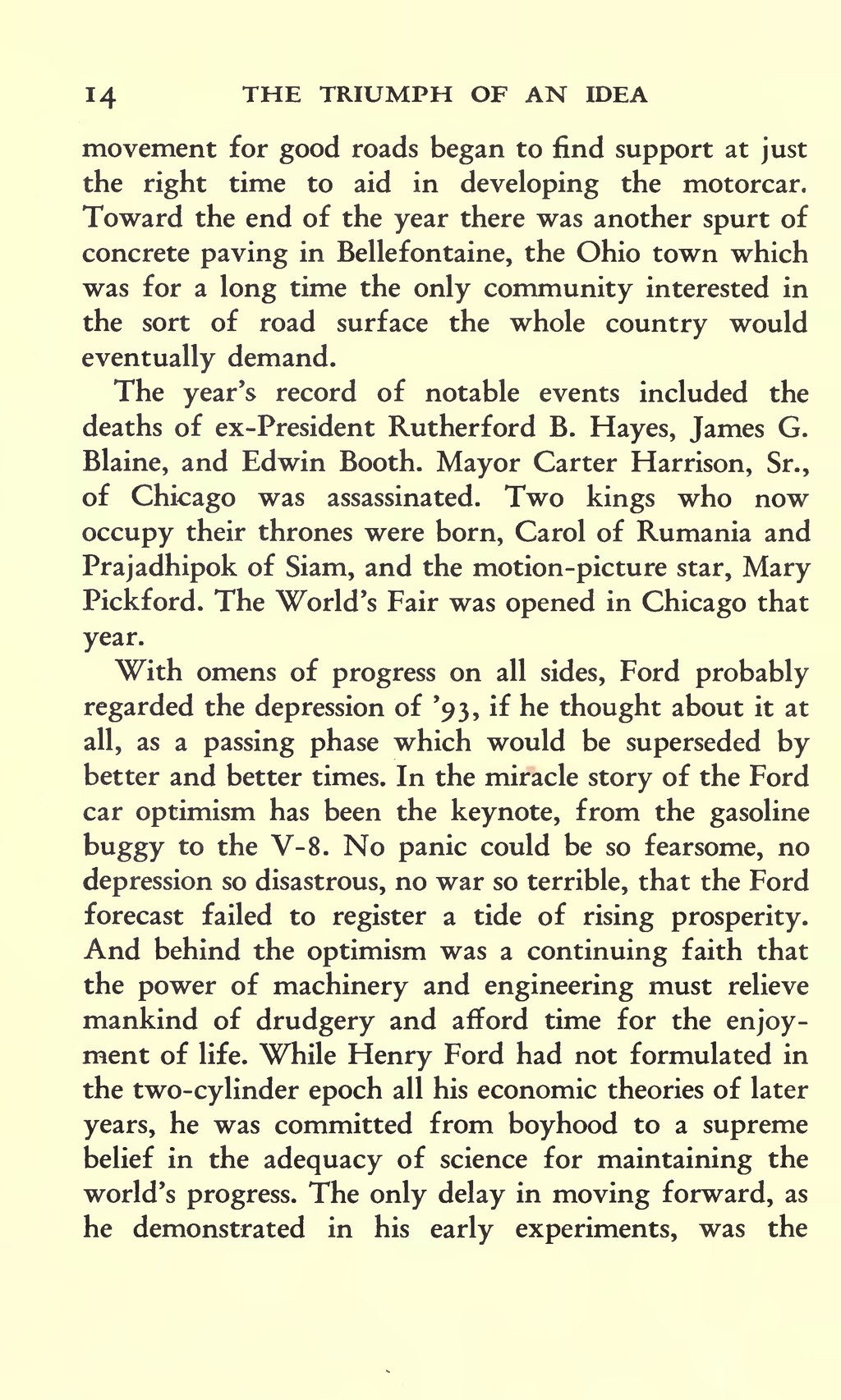movement for good roads began to find support at just the right time to aid in developing the motorcar, Toward the end of the year there was another spurt of concrete paving in Bellefontaine, the Ohio town which was for a long time the only community interested in the sort of road surface the whole country would eventually demand.
The year's record of notable events included the deaths of ex-President Rutherford B. Hayes, James G. Blaine, and Edwin Booth. Mayor Carter Harrison, Sr., of Chicago was assassinated. Two kings who now occupy their thrones were born, Carol of Rumania and Prajadhipok of Siam, and the motion-picture star, Mary Pickford. The World's Fair was opened in Chicago that year.
With omens of progress on all sides, Ford probably regarded the depression of '93, if he thought about it at all, as a passing phase which would be superseded by better and better times. In the miracle story of the Ford car optimism has been the keynote, from the gasoline buggy to the V-8. No panic could be so fearsome, no depression so disastrous, no war so terrible, that the Ford forecast failed to register a tide of rising prosperity. And behind the optimism was a continuing faith that the power of machinery and engineering must relieve mankind of drudgery and afford time for the enjoyment of life. While Henry Ford had not formulated in the two-cylinder epoch all his economic theories of later years, he was committed from boyhood to a supreme belief in the adequacy of science for maintaining the world's progress. The only delay in moving forward, as he demonstrated in his early experiments, was the
